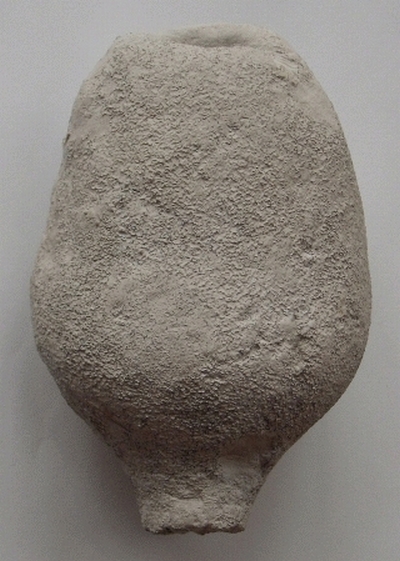
Amphilectella piriformis
Schrammen 1910
Typically, Amphilectella piriformis is capsicum-shaped in habit, with a stem and a deep paragaster, 10 to 20 mm wide. Depending on the state of preservation, the sponge shows the exposed skeletal scleres, which form a mesh large enough to be visible by the naked eye. Better preserved samples exhibit a dermal layer, composed of prodichotriaenes, which give a rough appearence to the cortex.
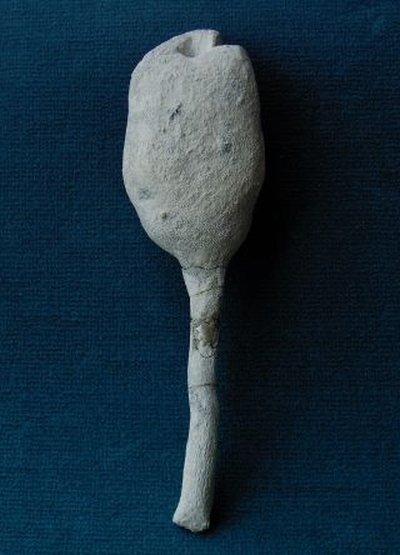
The second example of Amphilectella piriformis is preserved with its stem, including transition to the roots, revealing its high-rise nature.
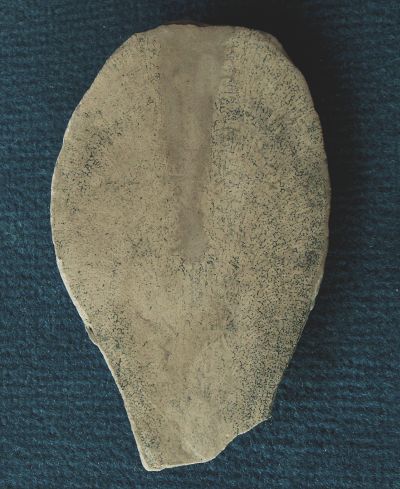
Longitudinal section of Amphilectella piriformis. Note central paragaster and plumose canal system.
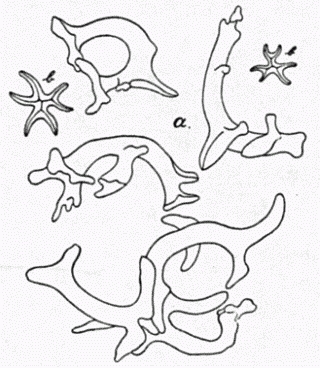
The skeleton of Amphilectella piriformis is composed of large megaclones, recognizable by the naked eye. The dermal armor consists of dense arrays of dichotriaenes, whose long shafts are anchored withinin the sponge body while its three bifurcated arms point outward.
The picture on the left shows
(a) megaclones and
(b) the heads of prodichotriaenes
of Amphilectella piriformis
(after Schrammen, 1910).
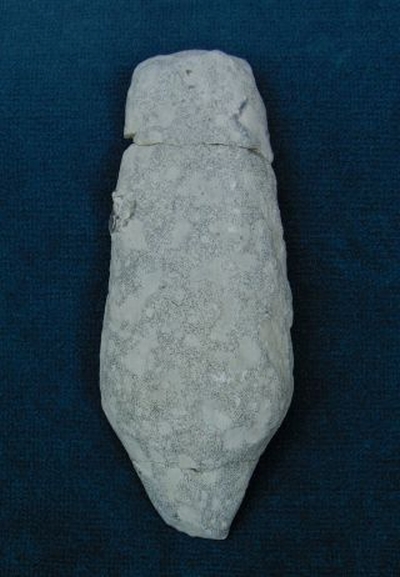
Amphilectella erecta
Schrammen 1924
Amphilectella erecta may be just a variant of Amphilectella piriformis , but Schrammen (1924) regarded it as a new species. According to Schrammen, its body may attain hights exceeding 300 mm.